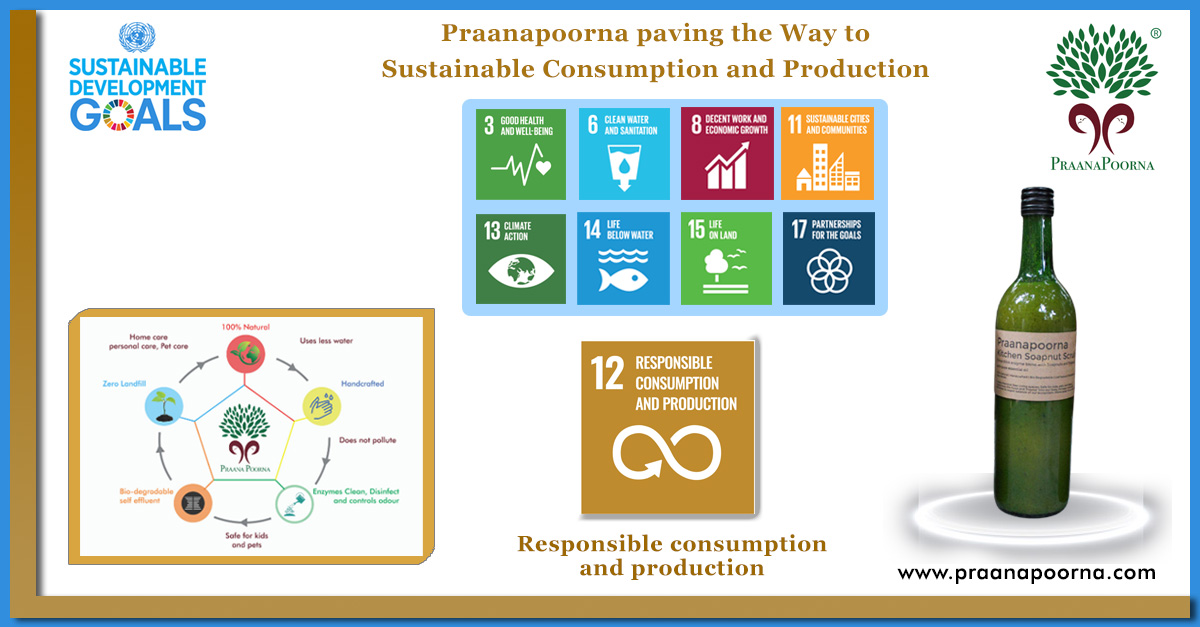No products added!
Responsible Consumption and Production feed each other. While one may argue that consumption patterns determine the products, this is not always true. Many times the products are required and there is demand however the status quo does not permit that. Besides there is an inherent inertia for going away from the comfort zone. And that is true both for companies and consumers. As an example everyday fogging of mosquito repellant in office campus and residential communities may be done to control the mosquitoes but customers have very few options to choose from almost similar kinds of products.
Sustainable Development Goal about Responsible consumption and production
To achieve economic growth and sustainable development we need to minimize ecological footprints by transforming the way we produce and consume goods and resources. Efficient management of our shared natural resources and the way we remove toxic waste and pollutants are important objectives to achieve. It is equally important to encourage industries and businesses to come up with sustainable innovations, as it is to promote eco-friendly lifestyles with consumers. In such a way it would be easier and cheaper to produce goods and services in a more efficient manner with fewer risks for the environment and the humankind.
Challenges to sustainable consumption and production patterns
According to recent projections, the world population could reach around 8.8 billion by 2030 and around 10 billion by 2050. The equivalent of nearly three planets would be needed to maintain the present way of life. Let’s have a look at where all the challenges come from.
We are polluting natural water resources faster than nature can recycle and purify. The point to remember is that more than 1 billion people still do not have access to fresh water. Along with agriculture and industry, households also account for a good percentage of water withdrawal. Also water gets contaminated from the hazardous chemicals we use in day today life such as cleaners and sprays.
Despite technological advances that have fostered energy efficiency improvements we consume a huge amount of energy and consequently contribute to CO2 emissions. Only 30 percent of the total energy consumption around the world is renewable energy.
Food and agriculture sector also faces threats mainly due to land degradation, declining soil fertility and unsustainable water use. And the primary cause for these issues are excessive use of pesticides and fertilizers in the field.
What is the solution and How do PranaPoorna products contribute to sustainable consumption and production
To identify the solutions that promote sustainable consumption and production, a better understanding of the environment and social impacts of products and services we use is necessary. Life cycle analysis of the product and considering all of its positive and negative impacts are important. Entrepreneurs can use their innovative power to develop the right solutions that can enable and encourage people to lead more sustainable lives, reduce impacts and enhance well-being.
PraanaPoorna is a young venture which looks at the entire lifecyle of the product. So, using natural resources and organic waste to create effective non toxic products through a social model that brings livelihoods to the homes of the marginalized communities. It impacts 9 SDGs directly, which includes reducing emissions, no addition of toxicity to land and water resources, removing hunger and poverty and many more. Additionally, the water used with Praanapoorna products naturally rejuvenate the soil and water. This eventually acts as a natural fertilizer for plants. They ensure 100% chemical free products without dye or preservatives or any synthetic compounds. And their fumigants are safe and natural with an inherent “insect repelling capabilities”. Looking at the entire life cycle of the product will help us achieve the SDG on Sustainable production and consumption. To know more about PranaPoorna products contact us.
938


